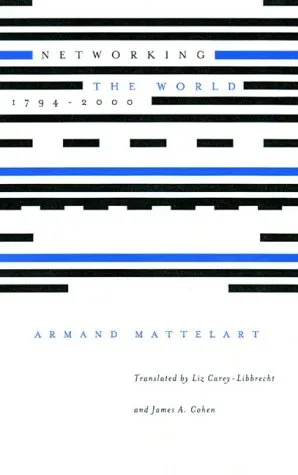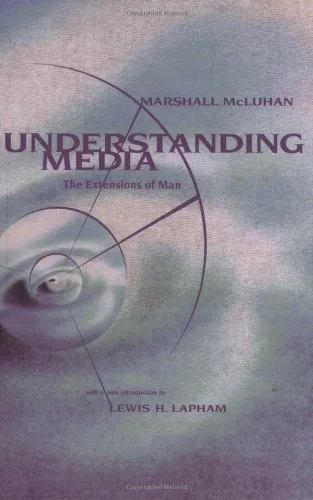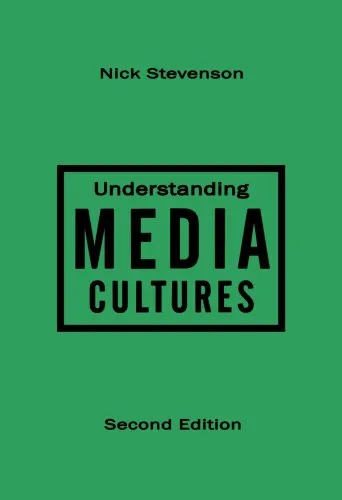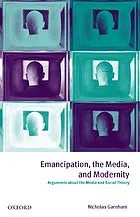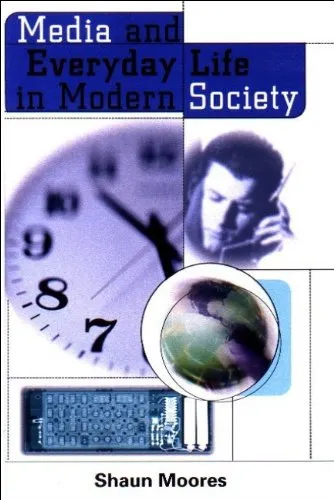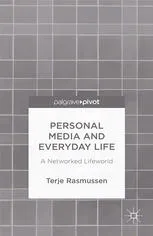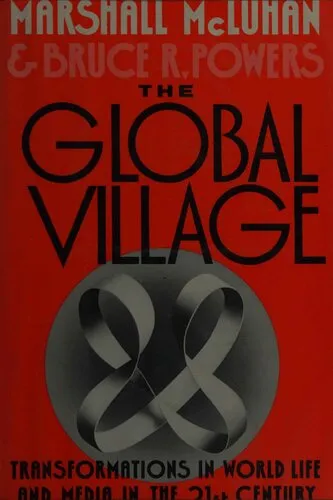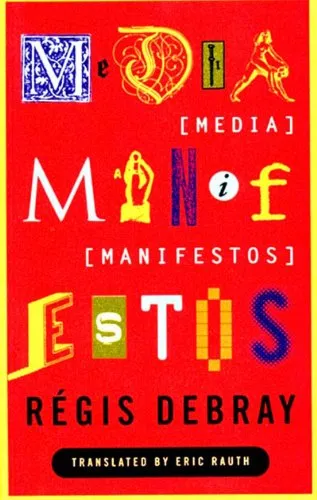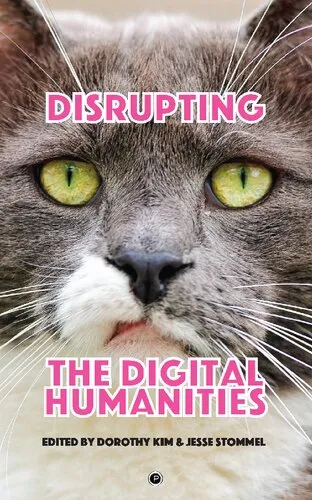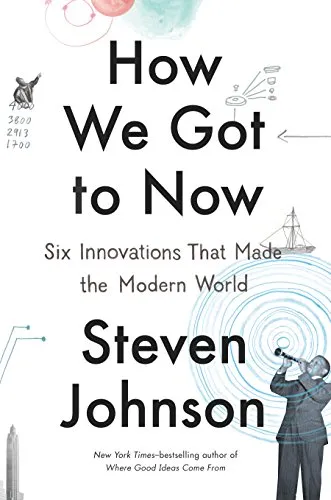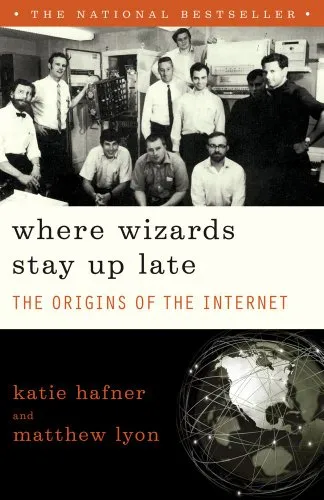Networking the World, 1794-2000
4.3
بر اساس نظر کاربران

شما میتونید سوالاتتون در باره کتاب رو از هوش مصنوعیش بعد از ورود بپرسید
هر دانلود یا پرسش از هوش مصنوعی 2 امتیاز لازم دارد، برای بدست آوردن امتیاز رایگان، به صفحه ی راهنمای امتیازات سر بزنید و یک سری کار ارزشمند انجام بدینکتاب های مرتبط:
خلاصه تحلیلی کتاب
کتاب Networking the World, 1794-2000 اثر من، تلاشی است برای ترسیم تاریخ فشرده و در عین حال عمیقِ شبکههای ارتباطی، از نخستین تلاشهای تلگرافی در اواخر قرن هجدهم تا شکلگیری زیرساختهای جهانی دیجیتال در پایان قرن بیستم. هدف اصلی، بررسی این است که چگونه فناوریهای مختلف ارتباطی، از تلگراف تا Internet، جهان را به شبکهای پویا بدل کردند.
ساختار کتاب به گونهای طراحی شده تا مخاطب را از نقطه آغازین انقلاب ارتباطی، یعنی سال 1794، به مسیر پیچیده و پرفراز و نشیب گسترش شبکهها هدایت کند. این روایت نهتنها تحولات فنی را بازگو میکند بلکه به زمینههای اجتماعی، اقتصادی و سیاسی نیز توجه ویژه دارد. با رویکردی بینرشتهای، میکوشم نشان دهم که شبکهها صرفاً ابزار انتقال داده نیستند، بلکه صحنهای برای تعاملات فرهنگی و تغییرات ژئوپولیتیکاند.
یکی از تمایزهای این اثر با مطالعات مشابه، تاکید بر پیوستگی تاریخی و زنجیرهای فناوریها است. در واقع ارتباط میان نوآوریهای قرن نوزدهم و انقلاب دیجیتال قرن بیستم، به خوبی نمایان میشود. به همین دلیل کتاب برای پژوهشگرانی که بر حوزه جهانیسازی اطلاعات کار میکنند، منبعی کلیدی به شمار میرود.
نکات کلیدی و کاربردی
یکی از محورهای اصلی کتاب، تحلیل روندهای فنی و سازمانی در ایجاد و توسعه شبکههای ارتباطی است. این روندها از مرحلهای به مرحله دیگر با نیازهای اجتماعی و سیاسی پیوند خورده و نشان میدهد که هیچ نوآوری فناورانهای در خلاء به وجود نیامده است.
از منظر کاربردی، این کتاب به مخاطب کمک میکند تا دریابد که پدیدههایی مثل Internet یا شبکههای ماهوارهای نه به عنوان رویدادهای جداگانه، بلکه نتیجه تاریخی طولانیمدت تعامل میان دولتها، شرکتها و جوامع بودهاند. فهم این پیوستگی، ابزار تحلیلی ارزشمندی برای ارزیابی آینده تحولات در حوزه communication networks فراهم میآورد.
همچنین در این اثر، به پیچیدگی روابط قدرت در مدیریت شبکهها اشاره شده است. اینکه چگونه بازیگران گوناگون — از امپراتوریهای استعماری گرفته تا نهادهای بینالمللی — مسیر توسعه فناوری را شکل داده یا محدود ساختهاند.
نقلقولهای ماندگار
اگرچه کتاب تمرکز زیادی بر تحلیل و روایت تاریخی دارد، اما در بخشهایی نیز جملاتی وجود دارد که میتوانند الهامبخش پژوهشگران و علاقهمندان باشند. این جملات نوع نگاه به ارتباطات جهانی را دگرگون میکنند.
«شبکهها نه تنها مسیر اطلاعات را میسازند، بلکه جهانبینی ما را نیز شکل میدهند.» نامشخص
«هر گره از یک شبکه، نقطه تلاقی تاریخ، فرهنگ و فناوری است.» نامشخص
چرا این کتاب اهمیت دارد
اهمیت Networking the World, 1794-2000 در این است که با نگاهی میانرشتهای به تاریخ مینگرد؛ تاریخی که هم علمی ـ فنی است و هم انسانی ـ فرهنگی. در دنیایی که وابستگی به شبکهها روزبهروز بیشتر میشود، درک ریشههای تاریخی این ساختارها به ما کمک میکند تا مسئولانهتر در قبال آینده آنها عمل کنیم.
در این کتاب، خواننده درمییابد که فناوریهای ارتباطی هرگز بیطرف نیستند، بلکه محصول تعامل قدرت، منافع اقتصادی و ضرورتهای فرهنگیاند. این درک موجب میشود که نگاه ما به ارتباطات جهانی، نه صرفاً فنی، بلکه انتقادی و تحلیلی باشد.
نتیجهگیری الهامبخش
کتاب Networking the World, 1794-2000 به گونهای طراحی شده تا هم برای پژوهشگران حرفهای و هم برای کتابخوانهای جدی جذاب باشد. با مرور دو قرن تحولات، درمییابیم
Analytical Summary
Armand Mattelart’s Networking the World, 1794-2000 offers a meticulously researched exploration of the historical evolution of global communication systems, tracing their origins from the late 18th century to the dawn of the 21st century. The work situates communications growth at the intersection of technological innovation, political power, and cultural exchange.
Mattelart examines how early semaphore lines, maritime routes, and telegraph networks established the foundations for connecting nations and economies, paving the way for radio, television, satellites, and the internet. By contextualizing these developments within broader political, economic, and cultural processes, the author reveals the intertwined nature of technology and society.
The narrative challenges the simplistic notion of technological determinism by demonstrating how communication infrastructures are as much products of human design, ideology, and governance as they are of mechanical and digital advances. The book pays equal attention to the aspirations of connectivity and the tensions—political, economic, and social—that have accompanied the global networking process.
Rather than presenting a mere chronological history, Networking the World, 1794-2000 offers a thematic analysis that addresses transnational flows of information, the regulation of communications, and the geopolitics of networks. In doing so, it draws connections between past innovations and contemporary debates about globalization, data sovereignty, and media power.
Key Takeaways
Readers will come away with a nuanced understanding of how communication systems have shaped—and been shaped by—two centuries of geopolitical, economic, and cultural transformations.
First, the book underscores that global communication history is neither linear nor uniformly progressive; periods of expansion often meet with resistance, regulation, or unintended consequences.
Second, it emphasizes the importance of political economy in understanding media and communication systems, situating technological developments within power struggles, trade relationships, and cultural agendas.
Third, it demonstrates that the fabric of transnational information networks is woven from both centralized and decentralized forces, illustrating a complex interplay that continues to influence contemporary network design and governance.
Memorable Quotes
“Communication networks are not just channels; they are manifestations of political and cultural order.”Unknown
“The wiring of the world was as much a story of empire as of invention.”Unknown
“To understand today’s digital landscapes, one must traverse the long paths of connectivity’s past.”Unknown
Why This Book Matters
Networking the World, 1794-2000 stands out as a seminal contribution to scholarship on the global communication history, offering both breadth and depth in its analysis.
For academics, it provides a robust theoretical framework grounded in political economy, making it especially valuable for media studies, international relations, and cultural history courses. For professionals, particularly those in telecommunications, policymaking, and digital strategy, the book informs present decisions by illuminating historical patterns of network development.
Information on any awards the book may have received is unavailable due to no reliable public source confirming such details. Nevertheless, its influence in scholarly circles is evident through its continued citation in studies that bridge history and contemporary communication debates.
Inspiring Conclusion
In the end, Networking the World, 1794-2000 does more than recount the milestones of global communication—it equips the reader with a lens to critically assess the networks of today and tomorrow.
By tracing the interconnected histories of technology, politics, and culture, the book invites deep reflection on our current age of instantaneous information exchange. Its relevance endures for those seeking to understand not only how networks are built but why they take the forms they do.
If you are ready to engage in a richly detailed and intellectually rigorous journey across two centuries of connectivity, let Networking the World, 1794-2000 be your guide. Read it, share its insights, and bring its historical perspective into the important conversations of our connected age.
دانلود رایگان مستقیم
شما میتونید سوالاتتون در باره کتاب رو از هوش مصنوعیش بعد از ورود بپرسید
دسترسی به کتابها از طریق پلتفرمهای قانونی و کتابخانههای عمومی نه تنها از حقوق نویسندگان و ناشران حمایت میکند، بلکه به پایداری فرهنگ کتابخوانی نیز کمک میرساند. پیش از دانلود، لحظهای به بررسی این گزینهها فکر کنید.
این کتاب رو در پلتفرم های دیگه ببینید
WorldCat به شما کمک میکنه تا کتاب ها رو در کتابخانه های سراسر دنیا پیدا کنید
امتیازها، نظرات تخصصی و صحبت ها درباره کتاب را در Goodreads ببینید
کتابهای کمیاب یا دست دوم را در AbeBooks پیدا کنید و بخرید
1272
بازدید4.3
امتیاز0
نظر98%
رضایتنظرات:
4.3
بر اساس 0 نظر کاربران
Questions & Answers
Ask questions about this book or help others by answering
No questions yet. Be the first to ask!
